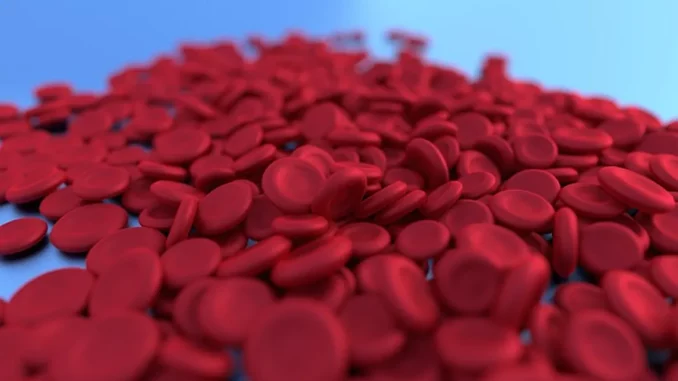
Anaemia remains a formidable public health challenge in India, impacting a significant portion of the population, particularly women and children. Despite concerted efforts to tackle this condition, recent surveys indicate a troubling rise in its prevalence. The traditional approach to diagnosing anaemia, which involves invasive blood tests, often proves impractical in resource-limited settings due to logistical, financial, and cultural barriers. This has led to the emergence of innovative, non-invasive technologies such as EzeCheck, which promise to revolutionise anaemia screening in India.
Anaemia is characterised by a deficiency in haemoglobin, impairing the body’s ability to transport oxygen, and resulting in fatigue, weakness, and other health complications. In India, the condition is notably prevalent among women and children, with the National Family Health Survey (NFHS-5) reporting an increase in anaemia rates across various demographics. For instance, the prevalence among children aged six months to five years escalated from 59% in NFHS-4 to 67% in NFHS-5, while among women aged 15-49 years, it rose from 53.1% to 57.1%. The Indian government’s response to this issue includes initiatives like the National Iron Plus Initiative and the Anaemia Mukt Bharat strategy, focusing on iron and folic acid supplementation. However, these programmes encounter challenges in reaching remote areas and ensuring timely diagnosis and treatment.
The need for non-invasive solutions in anaemia screening is becoming increasingly apparent. Traditional methods of screening require blood samples and laboratory analysis, which can be both costly and time-consuming. Furthermore, these methods are often inaccessible to remote and underserved populations due to limited healthcare infrastructure and socioeconomic disparities. Cultural factors and a fear of needles also deter participation in invasive screenings. Non-invasive technologies like EzeCheck present a promising alternative, offering a quick, painless, and cost-effective means of assessing haemoglobin levels without the need for blood samples. Utilising light-based spectroscopic techniques, EzeCheck can deliver results within seconds, making it ideal for mass screenings in schools and communities.
A recent study conducted in Bhubaneswar, India, validated the performance of EzeCheck in a community setting. The study involved 416 participants from urban slums and aimed to compare the haemoglobin estimation results of EzeCheck with those of a traditional haematology analyser. The findings revealed moderate agreement between the two methods, with EzeCheck demonstrating a high level of accuracy and precision. The non-invasive nature of the device means it generates no biomedical waste, making it an environmentally friendly option for large-scale screenings. Its portability and ease of use also allow healthcare workers, even with minimal training, to operate the device effectively.
The adoption of non-invasive screening technologies like EzeCheck could significantly enhance the reach and effectiveness of anaemia detection programmes in India. By facilitating early diagnosis, these devices can help identify individuals at risk and enable timely intervention, ultimately improving health outcomes and reducing the burden of anaemia. Moreover, non-invasive methods align with the goals of initiatives like Anaemia Mukt Bharat, which aim to reduce anaemia prevalence through preventive and curative measures. By integrating these technologies into existing healthcare frameworks, India can make substantial progress towards achieving its public health objectives.
The economic and practical benefits of non-invasive haemoglobin screening technologies are considerable. Traditional haemoglobin tests, while accurate, are often impractical in many parts of the country due to logistical and financial constraints. Non-invasive devices like EzeCheck emerge as viable alternatives, offering economic and practical advantages that could reshape anaemia screening programmes nationwide. The cost-effectiveness of non-invasive technologies is a significant factor driving their adoption. Traditional haemoglobin tests require costly laboratory equipment, consumables, and trained personnel, whereas non-invasive devices like EzeCheck have a lower unit test cost, making them accessible to a broader population. This affordability is particularly beneficial for large-scale public health initiatives, enabling more frequent screenings and better monitoring of anaemia prevalence.
In many parts of India, especially rural and remote areas, healthcare facilities and trained personnel are limited. Non-invasive devices like EzeCheck, which are portable and easy to use, can be deployed in these regions to extend the reach of anaemia screening programmes. By enabling healthcare workers with minimal training to conduct screenings, these devices can bridge the gap in healthcare access and ensure that underserved populations receive timely diagnosis and intervention. As India continues to grapple with the high prevalence of anaemia, the integration of non-invasive technologies into healthcare frameworks can play a pivotal role in improving health outcomes and reducing the burden of this condition. Continued innovation and strategic implementation of these technologies hold the potential to transform anaemia detection and management in India and beyond, ultimately improving the quality of life for millions affected by anaemia.


Be the first to comment